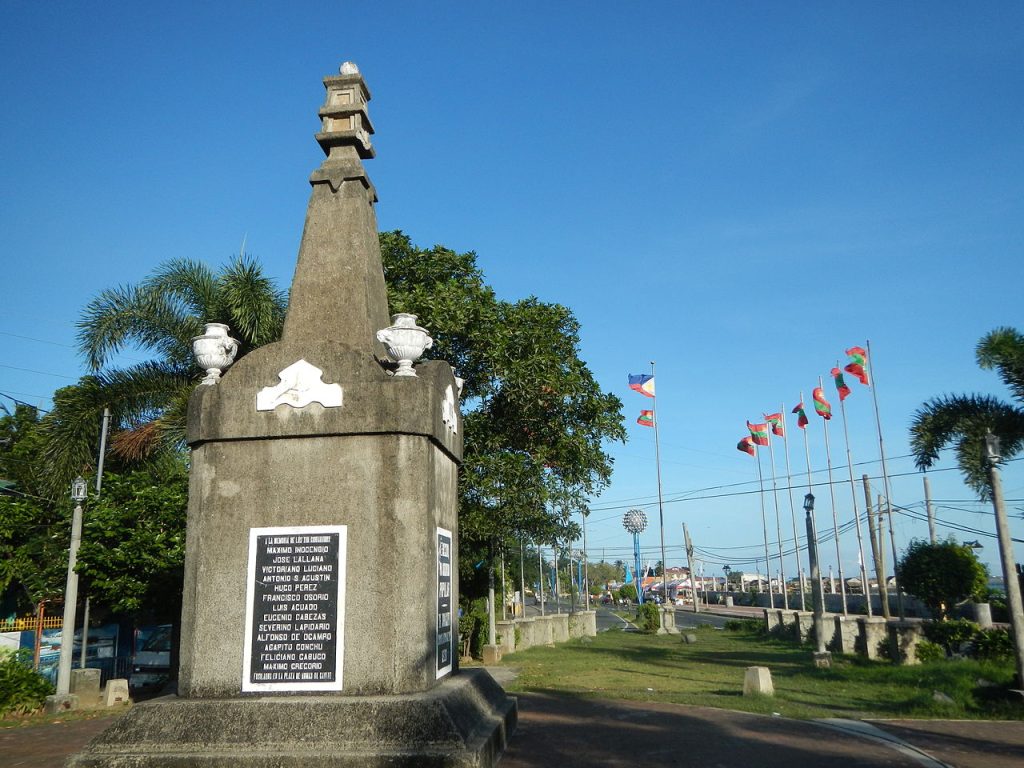
Thirteen Martyrs Monument in Samonte Park, Cavite City by Ramon FVelasquez
Discovering Cavite City: A Historic Gem by the Bay
On the northern tip of the province of Cavite in the CALABARZON region in Manila Bay, is the component city of Cavite. This city on a peninsula has 84 barangays (9 are urban, and the rest are rural), a 2020 population of 100,674 people, and a land area of 274.22 sq. kilometers (105.98 sq. miles)
It is a storied urban destination steeped in history, maritime legacy, and old-world charm. Once a key naval base and port during Spanish colonial times, this coastal city remains a proud bearer of the Philippines’ revolutionary past and a quiet yet culturally rich destination waiting to be explored.
by CaviteTech // Johan Villanueva
A City Built on History
Cavite City was one of the earliest Spanish settlements in the country and became a major naval stronghold. Its strategic location along Manila Bay made it a focal point for trade, defense, and governance. Fort San Felipe, an enduring Spanish-era fortification, still stands today as a reminder of the city’s militaristic past. Though parts of it are restricted due to its current use by the Philippine Navy, its presence underscores Cavite City’s pivotal role in history.
Perhaps one of the most notable landmarks is Sangley Point, once an American naval station and now a growing hub for aviation and port activity. Its transformation reflects the city’s shift from colonial utility to modern development.
Cultural Landmarks and Attractions
Cavite City is home to several churches, plazas, and ancestral homes that echo its deep Catholic and Spanish influence. The San Roque Parish Church, dating back to the early 18th century, is a serene space for reflection and a beautiful example of Baroque-inspired Filipino ecclesiastical architecture.
Just a short walk away, you’ll find the Cavite City Boardwalk, a scenic stretch offering panoramic views of Manila Bay, often lit with golden hues during sunset. It’s a favorite spot for locals and visitors alike to enjoy the sea breeze and simple street fare.
by Ted Espinosa Channel
Festivals and Local Flavor
One of the most vibrant traditions in the city is the Feast of San Roque, held every August. The event is filled with processions, street dancing, and a celebration known as “Karakol,” where locals parade the image of the patron saint through the streets in lively, music-filled festivities. It’s a colorful glimpse into Cavite City’s communal spirit and religious devotion.
The city is also known for its unique local dishes such as bacalao (a codfish stew traditionally served during Holy Week) and tamales, a rice and peanut-based delicacy inherited from Spanish Mexican influences. These flavors, rooted in both local and colonial traditions, continue to define Caviteño cuisine.
by Grant & Teresa
Corregidor Island is part of the city and therefore part of Cavite province.
Quiet Charm and Local Life
Though often overshadowed by more prominent tourist destinations, Cavite City offers an authentic and unhurried experience. Its walkable streets, friendly residents, and bayfront views provide a sense of nostalgia and simplicity—a refreshing contrast to the bustle of nearby Metro Manila.
Whether you’re a history buff, a cultural traveler, or someone seeking a quieter destination with rich stories to tell, Cavite City invites you to look beyond the surface and appreciate the layers of heritage embedded in its streets and shores.
by CaviteñoTayo